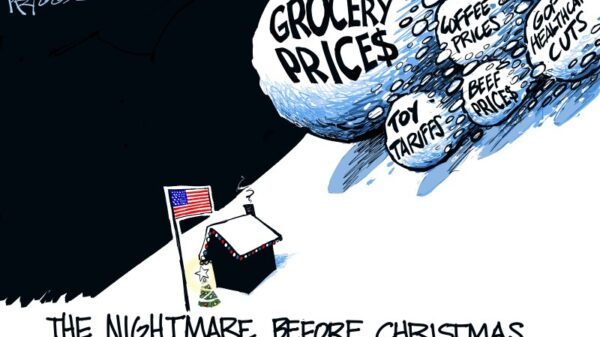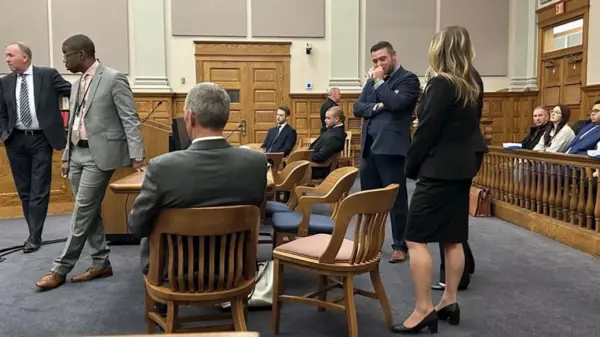The fragile ceasefire in Gaza faced a critical challenge on December 3, 2023, following a series of Israeli airstrikes that resulted in multiple casualties. Israeli forces responded to reported attacks by Hamas militants that killed two Israeli soldiers. The violence has raised concerns about the stability of a U.S.-proposed ceasefire designed to end two years of conflict in the region.
According to an anonymous Israeli security official, the transfer of aid into Gaza was temporarily suspended following the strikes. However, the military later confirmed that aid deliveries would resume on December 4, 2023. Approximately a week has passed since the ceasefire began, and there has been no immediate comment from U.S. officials regarding the renewed violence.
Health officials in Gaza reported that at least 36 Palestinians were killed, including children, as a result of the strikes. The Israeli military stated it targeted numerous Hamas positions after its troops were fired upon in the Rafah area, which is controlled according to agreed-upon ceasefire lines. Israeli Prime Minister Benjamin Netanyahu instructed the military to take “strong action” against any violations but did not imply an intention to resume full-scale conflict.
In response, Hamas accused Israel of breaching the ceasefire. The group stated that communication with its units in Rafah had been severed for months, asserting, “we are not responsible for any incidents occurring in those areas.” The renewed conflict has sparked fears among Gaza residents, many of whom worry about the return of war to a territory already suffering from famine and humanitarian crises.
Mahmoud Hashim, a father of five from Gaza City, expressed despair, appealing to international mediators, including U.S. President Donald Trump, to intervene. Health facilities in Gaza, including Al-Awda Hospital, reported receiving numerous casualties from the strikes, including 24 bodies from attacks in the Nuseirat and Bureij camps. Strikes across central Gaza, including a coffeehouse in Zawaida town, left multiple civilians dead, with reports indicating casualties among women and children.
Efforts to identify and recover hostages continued amidst the violence. Israel confirmed the remains of two hostages released by Hamas, believed to have been killed during the initial attack on October 7, 2023. This attack marked the beginning of the ongoing conflict, which resulted in significant casualties on both sides.
Hamas has been handing over the remains of deceased hostages, with reports of 12 bodies returned in the past week. The Qassam Brigades, Hamas’s armed wing, indicated that it found another body and would return it if conditions allowed. Meanwhile, Israel emphasized the need for Hamas to fulfill its obligations under the ceasefire agreement, including the return of 28 deceased hostages. The Rafah border crossing, the only entry point not controlled by Israel, remains closed until further notice, according to Israeli authorities.
As the situation develops, a Hamas delegation led by chief negotiator Khalil al-Hayya arrived in Cairo to continue discussions surrounding the ceasefire and future governance of Gaza. Plans to disarm Hamas and the withdrawal of Israeli forces from certain areas are part of the ongoing negotiations.
The humanitarian toll of the conflict has been staggering, with Gaza’s Health Ministry reporting over 68,000 deaths since the beginning of hostilities. This figure includes both civilians and combatants, and the ministry’s casualty records are regarded as reliable by various international agencies. In contrast, Israel has disputed these figures without providing its own casualty count.
The ongoing conflict has left thousands missing, according to the Red Cross, compounding the challenges facing both Israeli and Palestinian communities. As discussions continue, the focus remains on establishing a lasting peace and addressing the humanitarian needs of those affected by the violence.






































































